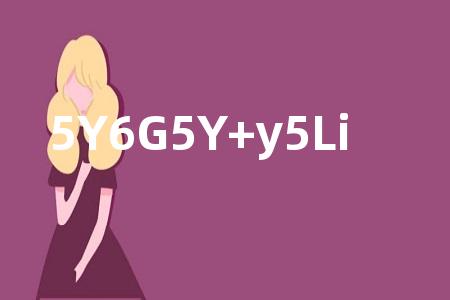日期:

广岛原子弹爆炸是人类历史上一个重要的转折点,它不仅标志着战争的残酷和破坏力,也提醒着世人追求和平与和谐共处的重要性。
On August 6, 1945, during the final stages of World War II, the United States dropped the first atomic bomb, "Little Boy," on the city of Hiroshima, Japan. This devastating event marked the first use of nuclear weapons in human history and resulted in the deaths of over 100,000 residents, causing catastrophic damage to the city . The decision to use atomic bombs was made by President Harry S. Truman to expedite the end of the war, reduce Allied casualties, and to check the expansion of the Soviet Union in the Far East. The target cities were chosen based on their military and industrial significance. Hiroshima was an important military hub and Nagasaki, bombed three days later, was a key industrial and shipbuilding center . The bomb "Little Boy" contained 64 kilograms of uranium-235, and the explosion released an energy equivalent to 15 kilotons of TNT, destroying nearly everything within a one-kilometer radius. The immediate aftermath saw a mushroom cloud rising above the city, and the intense heat and blast wave caused widespread destruction . 1945年8月6日,在第二次世界大战的最后阶段,美国在广岛市投下了名为“小男孩”的原子弹。这一毁灭性事件标志着人类历史上首次使用核武器,导致超过10万居民死亡,对这座城市造成了灾难性的破坏 。 使用原子弹的决定是由美国总统哈里·S·杜鲁门做出的,目的是加快战争的结束,减少盟军的伤亡,并遏制苏联在远东的扩张。目标城市的选择基于它们的军事和工业重要性。广岛是一个重要的军事中心,而三天后被轰炸的长崎,是一个关键的工业和造船中心 。 “小男孩”原子弹含有64公斤的铀-235,爆炸释放的能量相当于15千吨TNT,几乎摧毁了一公里半径内的所有东西。爆炸后立即出现了蘑菇云,强烈的热浪和冲击波造成了广泛的破坏 。
World War II - 第二次世界大战
Hiroshima - 广岛(日本城市)
nuclear weapons - 核武器
residents - 居民
catastrophic damage - 灾难性破坏
Harry S. Truman - 哈里·S·杜鲁门(美国总统)
Allied casualties - 盟军伤亡
Soviet Union - 苏联
Far East - 远东
military hub - 军事中心
industrial significance - 工业重要性
uranium-235 - 铀-235
TNT - 三硝基甲苯(一种炸药)
destruction - 破坏
mushroom cloud - 蘑菇云
blast wave - 冲击波
immediate aftermath - 爆炸后的立即后果
intense heat - 强烈热浪
历史上的今天 · 1945年-广岛原子弹爆炸

On August 6, 1945, during the final stages of World War II, the United States dropped the first atomic bomb, "Little Boy," on the city of Hiroshima, Japan. This devastating event marked the first use of nuclear weapons in human history and resulted in the deaths of over 100,000 residents, causing catastrophic damage to the city . The decision to use atomic bombs was made by President Harry S. Truman to expedite the end of the war, reduce Allied casualties, and to check the expansion of the Soviet Union in the Far East. The target cities were chosen based on their military and industrial significance. Hiroshima was an important military hub and Nagasaki, bombed three days later, was a key industrial and shipbuilding center . The bomb "Little Boy" contained 64 kilograms of uranium-235, and the explosion released an energy equivalent to 15 kilotons of TNT, destroying nearly everything within a one-kilometer radius. The immediate aftermath saw a mushroom cloud rising above the city, and the intense heat and blast wave caused widespread destruction . 1945年8月6日,在第二次世界大战的最后阶段,美国在广岛市投下了名为“小男孩”的原子弹。这一毁灭性事件标志着人类历史上首次使用核武器,导致超过10万居民死亡,对这座城市造成了灾难性的破坏 。 使用原子弹的决定是由美国总统哈里·S·杜鲁门做出的,目的是加快战争的结束,减少盟军的伤亡,并遏制苏联在远东的扩张。目标城市的选择基于它们的军事和工业重要性。广岛是一个重要的军事中心,而三天后被轰炸的长崎,是一个关键的工业和造船中心 。 “小男孩”原子弹含有64公斤的铀-235,爆炸释放的能量相当于15千吨TNT,几乎摧毁了一公里半径内的所有东西。爆炸后立即出现了蘑菇云,强烈的热浪和冲击波造成了广泛的破坏 。
英语词汇
atomic bomb - 原子弹World War II - 第二次世界大战
Hiroshima - 广岛(日本城市)
nuclear weapons - 核武器
residents - 居民
catastrophic damage - 灾难性破坏
Harry S. Truman - 哈里·S·杜鲁门(美国总统)
Allied casualties - 盟军伤亡
Soviet Union - 苏联
Far East - 远东
military hub - 军事中心
industrial significance - 工业重要性
uranium-235 - 铀-235
TNT - 三硝基甲苯(一种炸药)
destruction - 破坏
mushroom cloud - 蘑菇云
blast wave - 冲击波
immediate aftermath - 爆炸后的立即后果
intense heat - 强烈热浪
下一篇:返回列表
相关文章
- 历史上的今天 · 1945年-广岛原子弹爆炸
- 英语美文:Interview God 采访上帝
- 14种不同的“我认为”英语表达方式
- 人际交往中的误会用英语如何表达?
- 十个在英文电影中常见却不一定能听懂的词汇
- 常见中餐烹饪方式的英语说法
- 英语中那些有趣的外来俗语
- 如何用英语表达“食物坏了”?
- 实用口语:如何用英文砍价?
- 体育专业英语词汇:体操、游泳
- 各种表情、表情包的英文表达
- 乒乓球比赛规则与英语术语解析
- 历史上的今天 · 1962年著名影星玛丽莲·梦露神秘死亡
- dogdays——狗和炎热究竟有甚么关系呢?
- 一些简短而富有表现力的英语短语
- 关于女排精神的英语作文5篇
- 双语阅读:天气预报中的符号是谁发明的?
- 美剧中触动人心的经典英语台词
- 英语阅读:哪些材质的衣服更吸汗?
- 关于二手货 Secondhand Goods 的英语作文